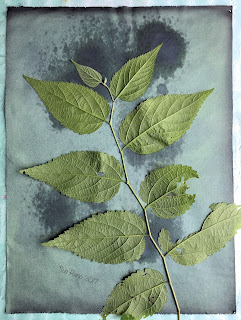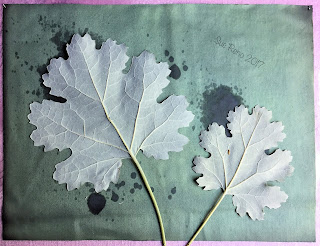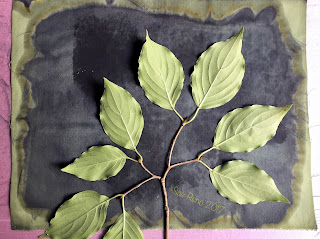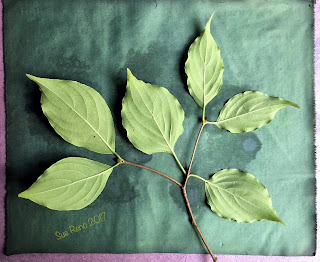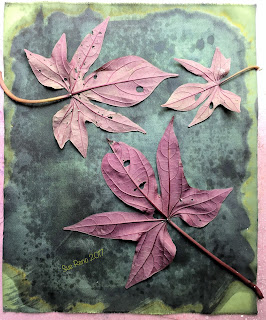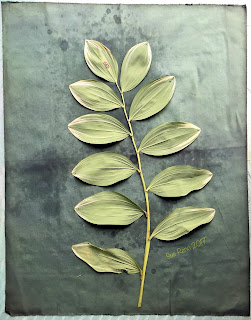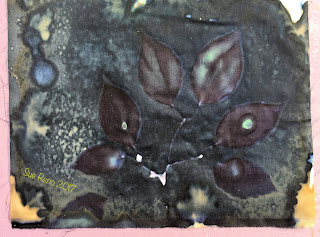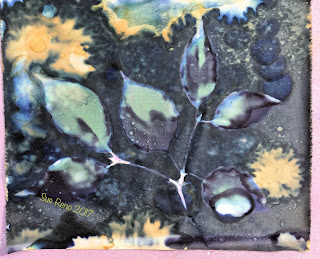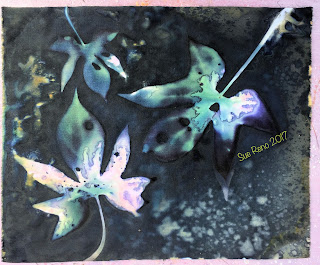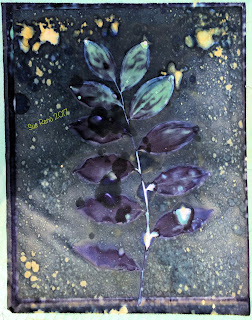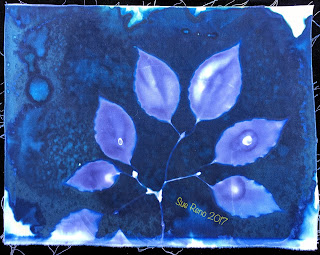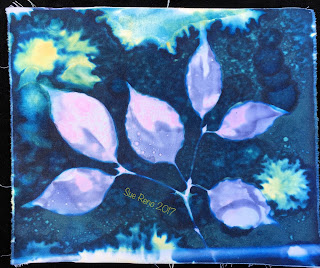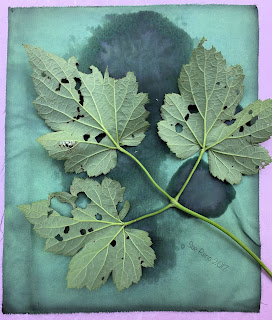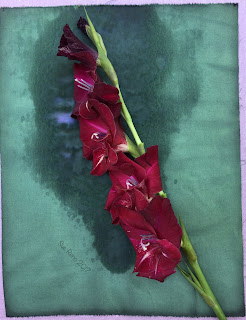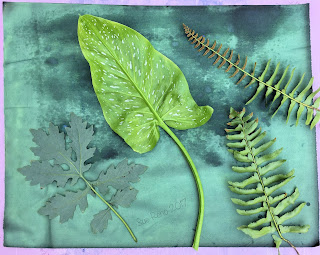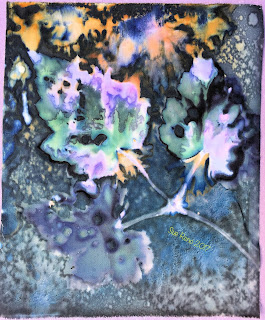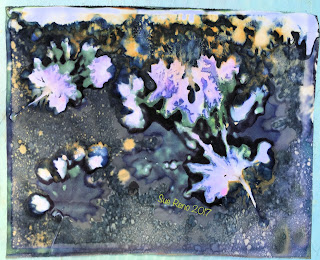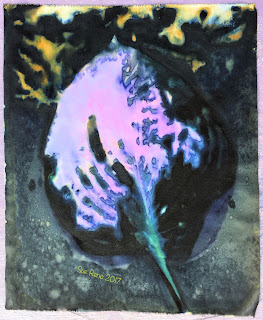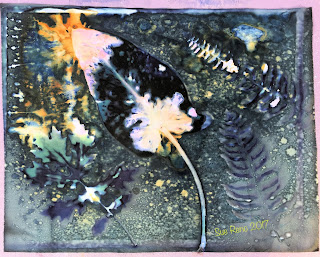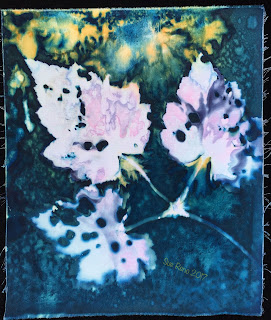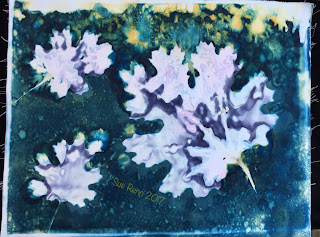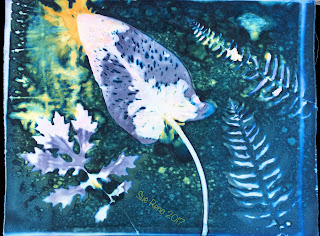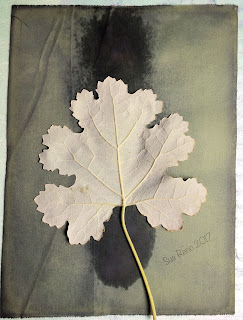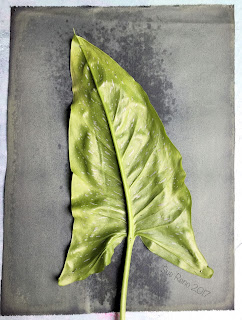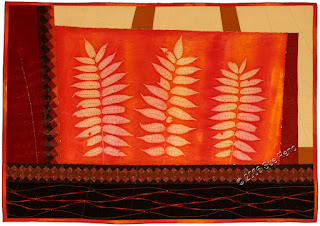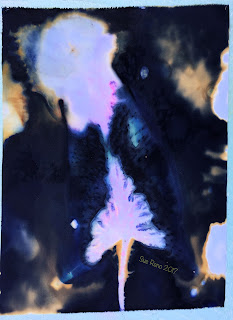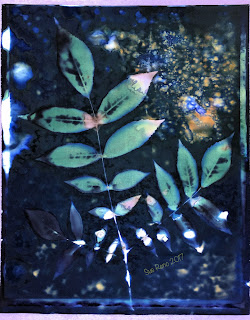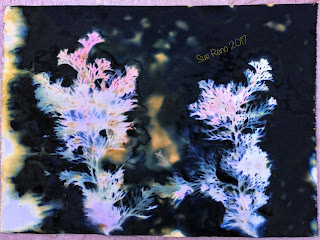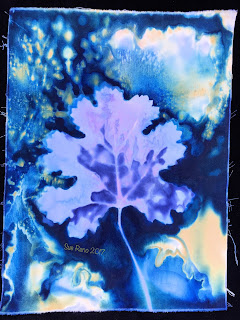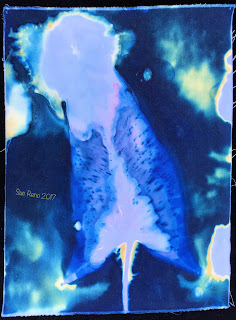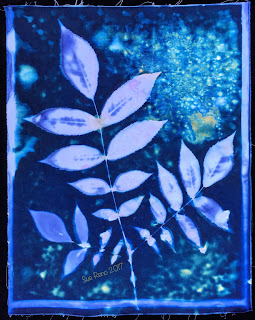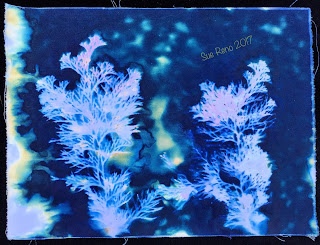Years ago I nearly drove off the road when I spotted plume poppies growing in someone's yard. Pre-internet, it took a bit of research to figure out what they were, but I obtained some and they seem like a gift each and every year. They are tall and majestic and architectural in structure. They are notorious for spreading, but I have heavy clay soil so they just pop up in interesting places now and again.
Here's my Plume Poppy quilt from 2010, 81" x 74":
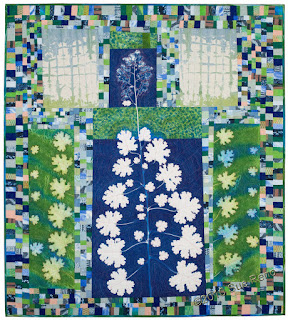 |
| Plume Poppy by Sue Reno |
I followed the same format this time as in part 10, with diluted Dye-na-flow and washing soda added to tint and enhance the prints. You can read about all my experiments to date by clicking the Wet Cyanotype tab in the upper header.
Here's some interesting, insect damaged leaves from an ornamental sweet potato:
I rounded out the batch with a stalk of variegated Solomon's seal:
The day started out sunny but then the clouds rolled in, so I left the prints out overnight and caught a bit of morning sunshine before bringing them in to dry off in the dark. It looks like I have another moody batch on my hands:
There was a lot of great mottling and explosive effects around the edges:
Here are the rinsed, dried, and ironed finished prints, starting with the hackberry:
The plume poppy:
I'm very satisfied with this batch of prints. I am closing in on producing prints with this technique that are not just fun and novel, but also have a degree of sophistication. I'm getting closer to capturing the intent of all my work, to show a deep degree of familiarity with my subject matter. There really is no substitute for doing the work.
